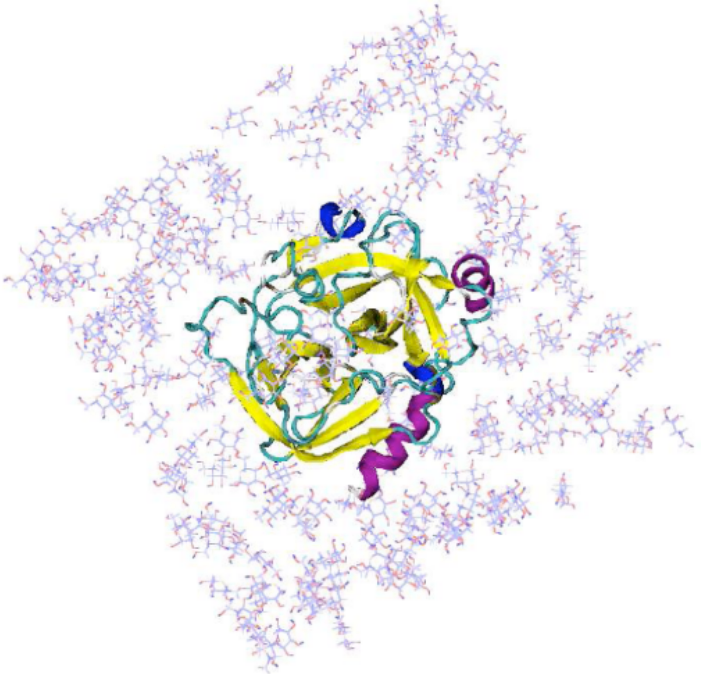Molecular Computations of Preferential Interaction Coefficients of Proteins

BibTeX
Estimation of the thermodynamic properties of proteins in mixed solvents is crucial for understanding the effect of cosolvents on rates and equilibrium constants of reactions involving proteins. In this paper, a predictive, molecular level approach for the study of preferential interactions of proteins with either water or cosolvents based on all-atom, statistical mechanical models is used to calculate the preferential interaction coefficient of proteins. Model systems comprised of the cosolvents urea, glycerol, arginine hydrochloride, guanidinium hydrochloride, and glucose with the proteins RNase T1, Hen egg white lysozyme, and α-chymotrypsinogen A(α-Cgn A) are studied. Trajectories in the range 10−20 ns are analyzed in order to validate this method. From the computational perspective, several key aspects of these simulations are investigated in detail. Protein dynamics and cosolvent dynamics play an important role in the estimation of preferential interaction coefficients, and in determining the length of simulation required to get a reliable estimate of the coefficient. Further, simulation results are found to be sensitive to changes in the cosolvent force field parameters. A comparison of simulated and experimental data is performed for two different force field parameters for glycerol and urea in order to assess the sensitivity of the preferential interaction coefficient to changes in force field parameters. This work highlights the effect of length of simulation, cosolvent force field parameters, and protein structure fluctuations on estimation of the preferential interaction coefficient of proteins in mixed solvents.

